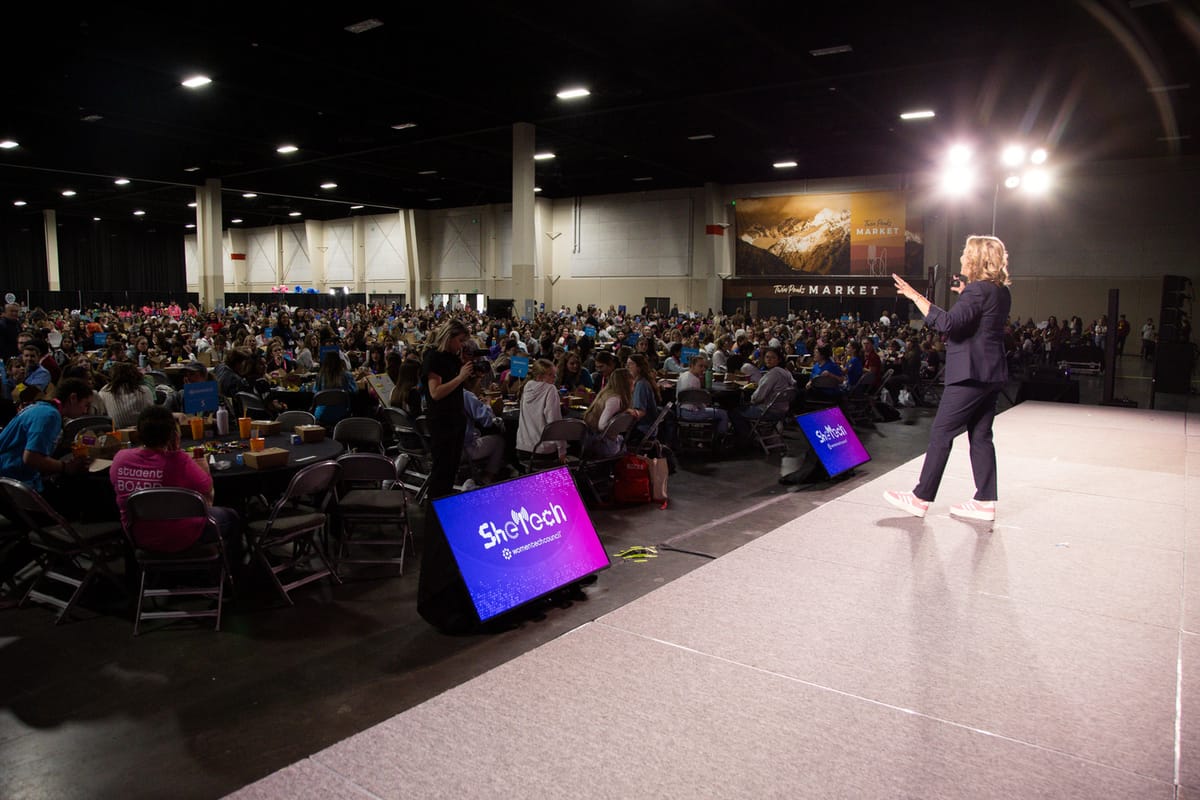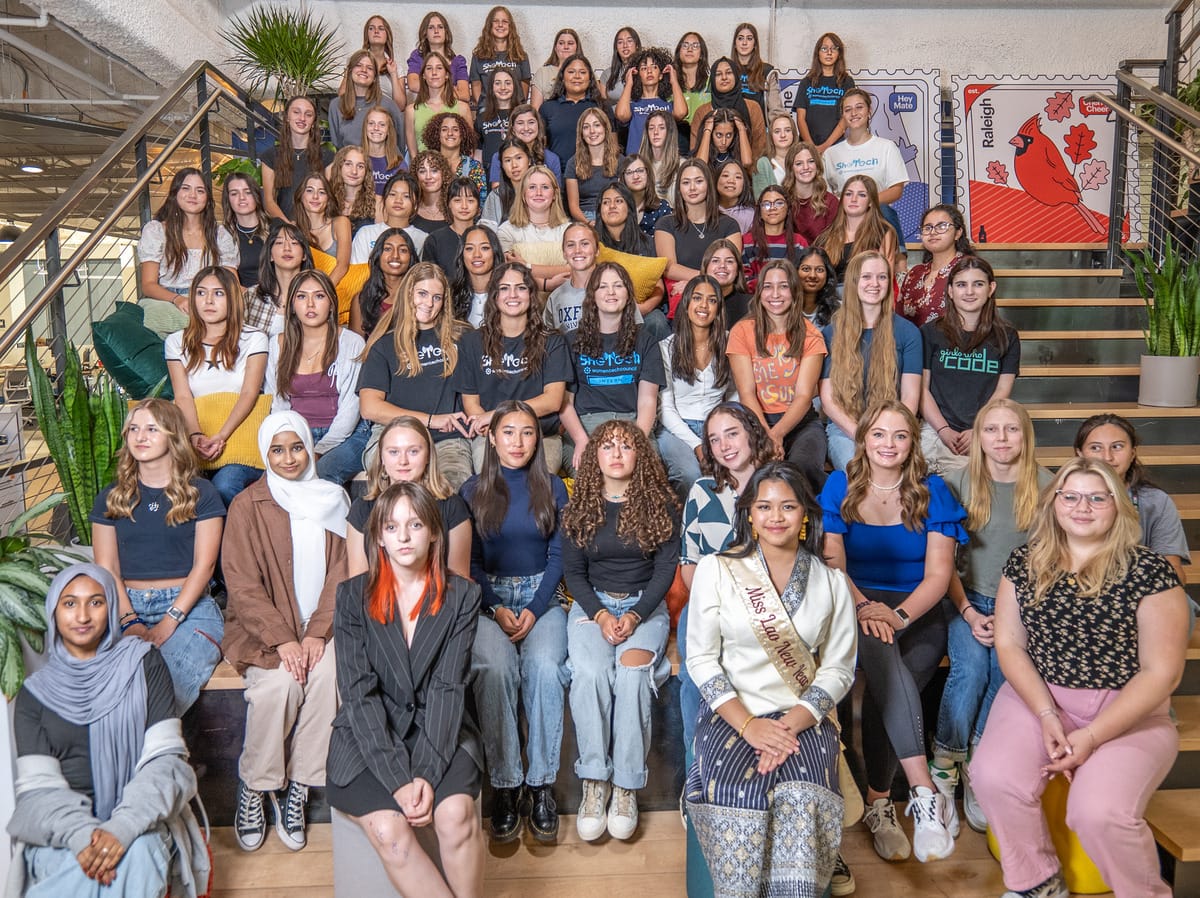


In recent years, the technology community in Utah has grown tremendously. This expansion has paved the way for great opportunities for the Beehive State’s citizens in Science, Technology, Engineering, and Math (STEM) fields that support work in education technology, financial services, data intelligence, cybersecurity, aerospace, and more.
Despite all of the great STEM opportunities in Utah, women's participation in our state has trailed the national average. A 2022 report from the Utah Women and Leadership Project estimated that women only accounted for 21% of traditional STEM occupations in the state.
The lack of representation of women in STEM is not unique to Utah; it is a nationwide issue. Recent estimates indicate that women make up only 35% of the STEM workforce in the U.S. The American Association of University Women conducted a study on this underrepresentation and identified several contributing factors, including the perception that men are superior in math and naturally more gifted in STEM, inherent biases around work-life balance, and an overall lack of interest.
Another important factor to acknowledge is the general lack of exposure to STEM fields. Recent research found that over a third (37%) of female high school graduates have not been exposed to a wide enough variety of options. This is reflected in recent data from YouScience on the career exposure gaps among female high and middle school students in Utah. This data shows a 92% exposure gap in Computers & Technology, an 89% gap in Advanced Manufacturing, and a 52% exposure gap among Utah’s female students in Engineering. These significant exposure gaps can be connected to the underrepresentation of women in STEM fields, creating a cyclical challenge.
Considering the many factors contributing to the underrepresentation of women in STEM, we must address them proactively in order to break the glass ceiling. A great starting point is introducing women to these fields early in their lives, giving them time to cultivate interest and explore potential futures.

The Steps to STEM
Firstly, we must help female students understand their full potential earlier. This can be accomplished by measuring aptitudes, and it should be done as early as middle school. Aptitudes are an individual’s natural abilities to learn or perform in given areas. According to the Johnson O'Connor Foundation, aptitudes are solidified by the age of 14. Assessments that measure these abilities ask students to complete activities in numerical reasoning, comprehension, spatial visualization, inductive reasoning, and sequential reasoning. The results can then be linked to educational and career pathways that may be ideal for each student but were previously unknown to them, like STEM.
Secondly, schools play an important role in bridging the gap between classroom learning and real-world application. Utah schools are increasingly interested in expanding career-connected learning programs, and we must continue that trend. These programs aim to introduce female students to new opportunities that directly correlate to the subjects they are learning each day.
Thirdly, schools and businesses throughout the state can partner to create work-based learning experiences for female students that introduce real-world practice. These experiences can include internships, apprenticeships, specialized training programs, and more. Initiatives like these can be highly beneficial, providing true, hands-on training.
Finally, it’s crucial to effectively and directly promote clubs, community organizations, and extracurricular activities to female students as they can significantly impact their exposure to and interest in STEM. Cydni Tetro, Chairman of the Board, Founder, and President of the Women Tech Council, has been a long-time advocate for increasing STEM exposure for female students. Her organization’s SheTech program is an outstanding example of how activities outside of school can yield tangible results for thousands of female students.
In fact, before the implementation of SheTech, 90% of high school girls didn’t know a woman in STEM, 90% lacked a role model in STEM, and only 15% were interested in pursuing a STEM-related education. With SheTech, 100% of girls can meet a role model and interact with a female professional in the field of technology through networking, mentoring, and more. As a result, 95% of SheTech interns declare STEM majors upon entering college.
The Way to Success
Encouraging more female students to consider and explore STEM can help prepare them for stability and personal success in the future. STEM occupations are usually in high demand, offer higher salaries, and can be less prone to disruption. This effort can also help to break the cycle of underrepresentation and the glass ceiling that exists for women in the state. Such approaches foster a diverse and innovative workforce, which is an essential factor in driving greater creativity and breakthroughs in a variety of industries.
These initiatives benefit the individuals involved and contribute to a more dynamic and prosperous society as a whole–both here in Utah and beyond. Ultimately, this will drive greater innovation, enhance economic growth, and ensure that Utah remains at the forefront.
Our female students have aptitudes for STEM-related careers. Let’s work to increase their interest so they can lead Utah's next wave of innovation.
Amy Miller-Weiland is a multi-industry, award-winning learning strategist and technology executive dedicated to discovering and developing the next generation of effective leaders. She leads teams to design and deliver learning and systematic solutions for higher education and world-wide organizations. She currently supports the Professional Services, Learning and Development, and Exam teams at YouScience. See previous TechBuzz News coverage of YouScience here.

